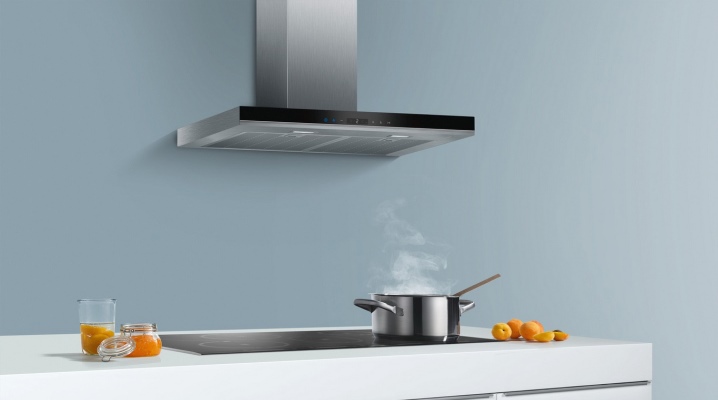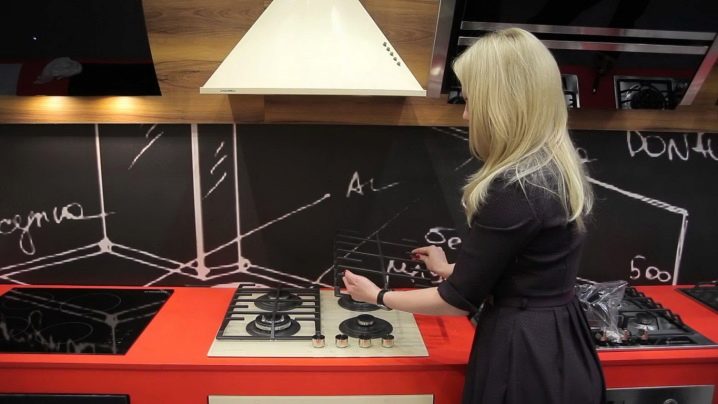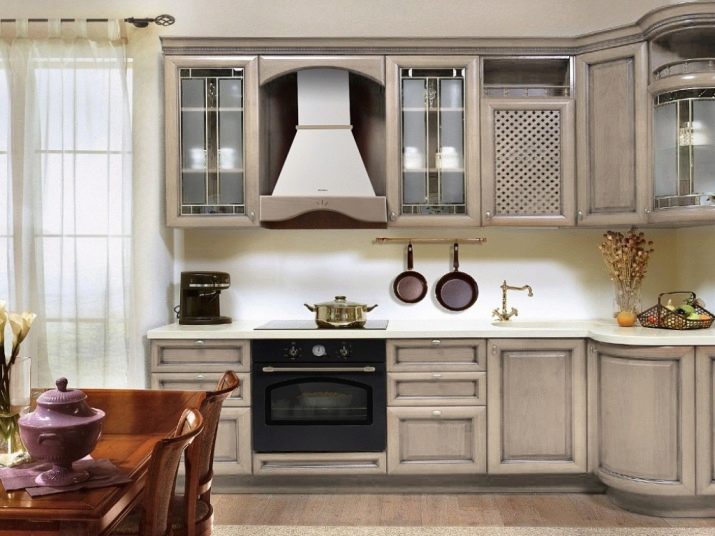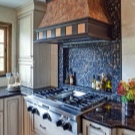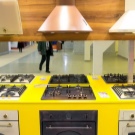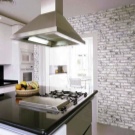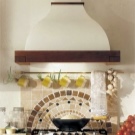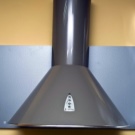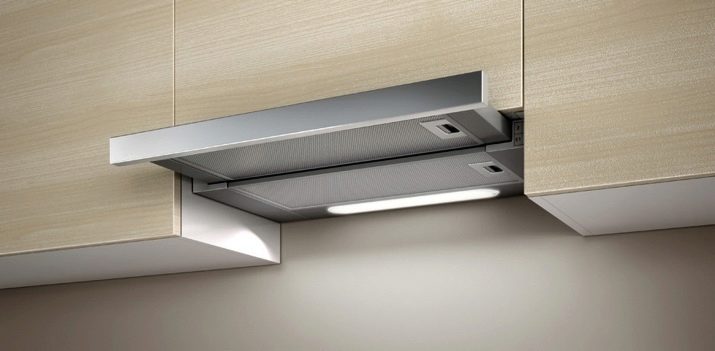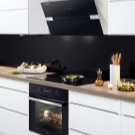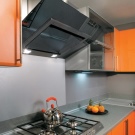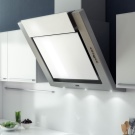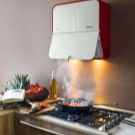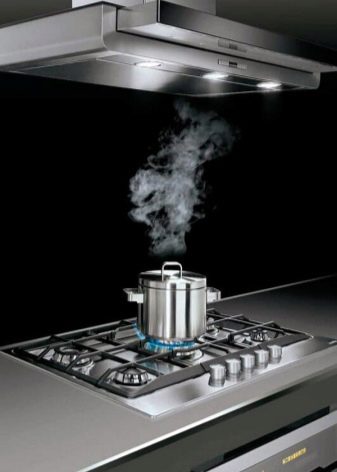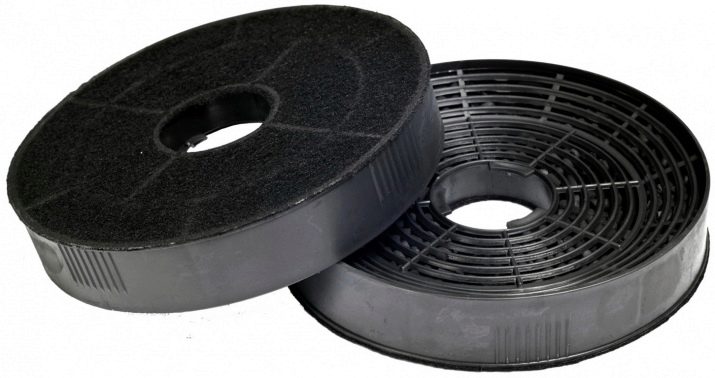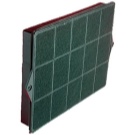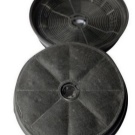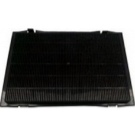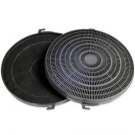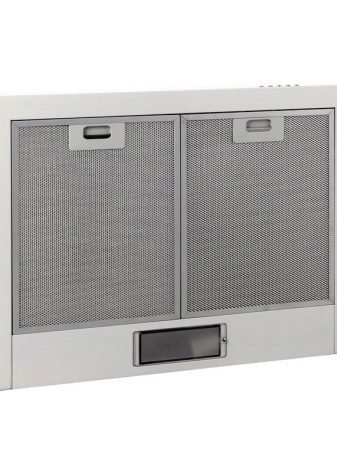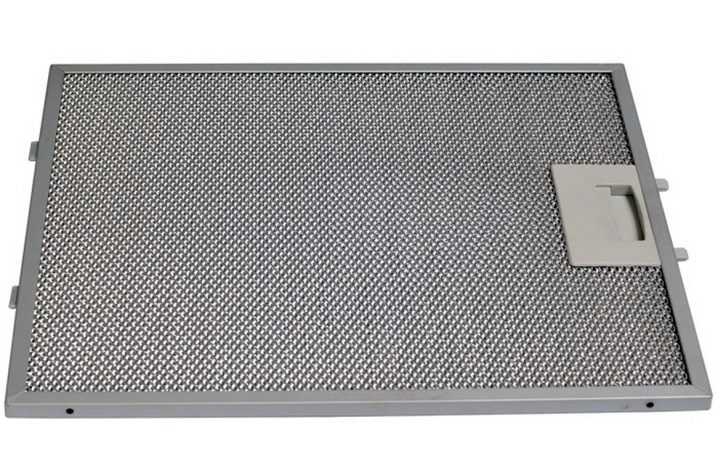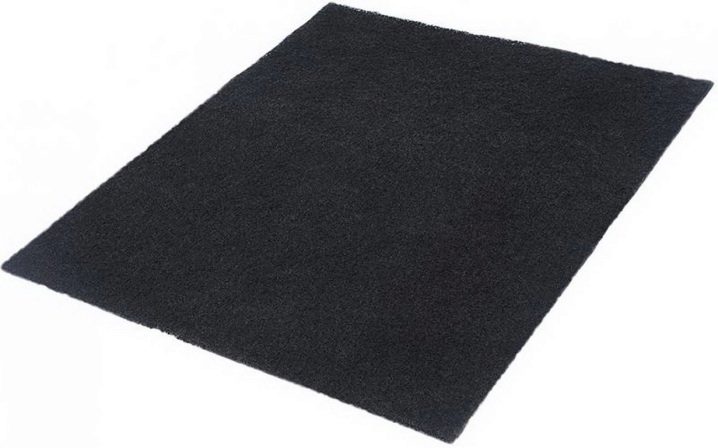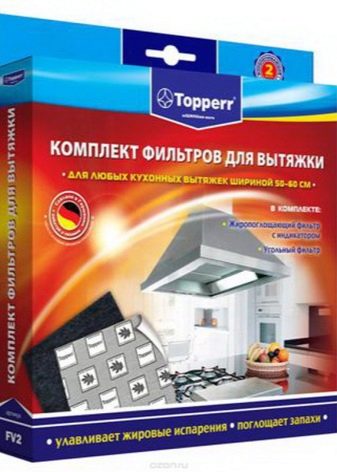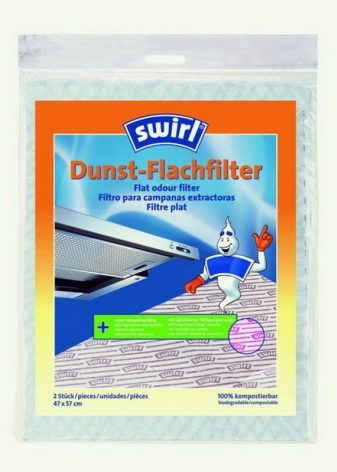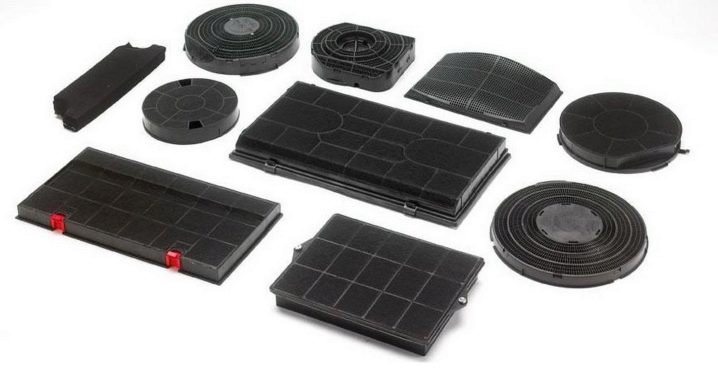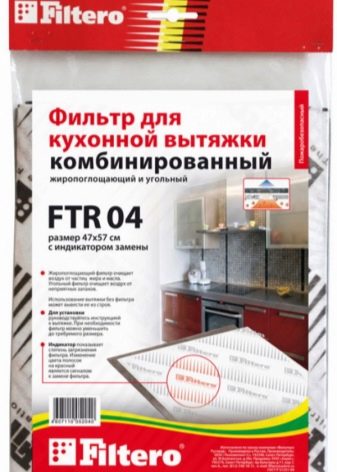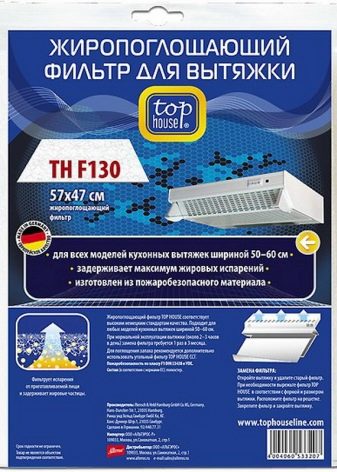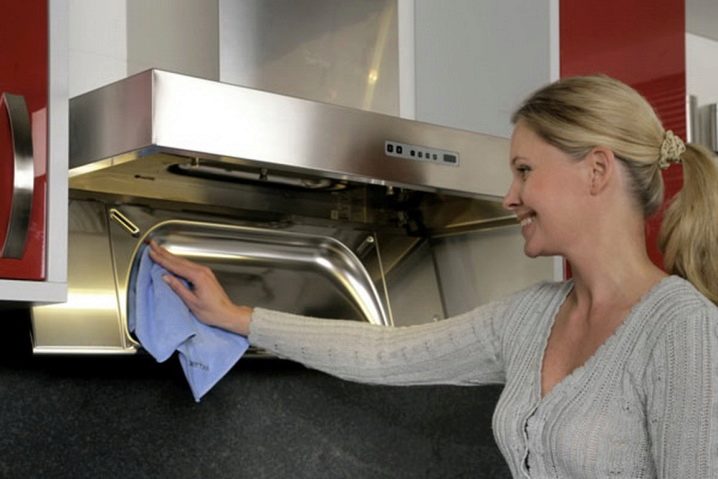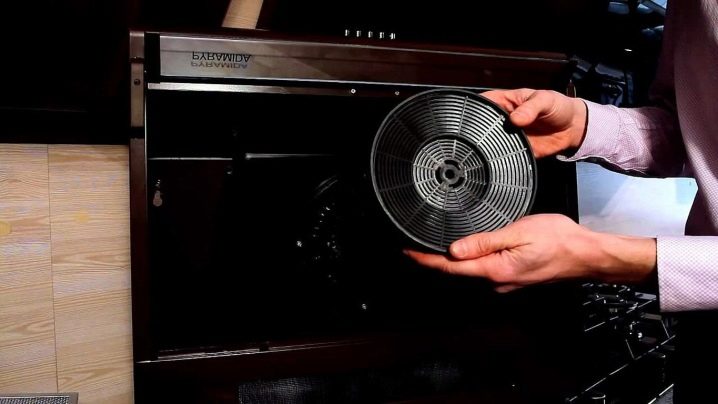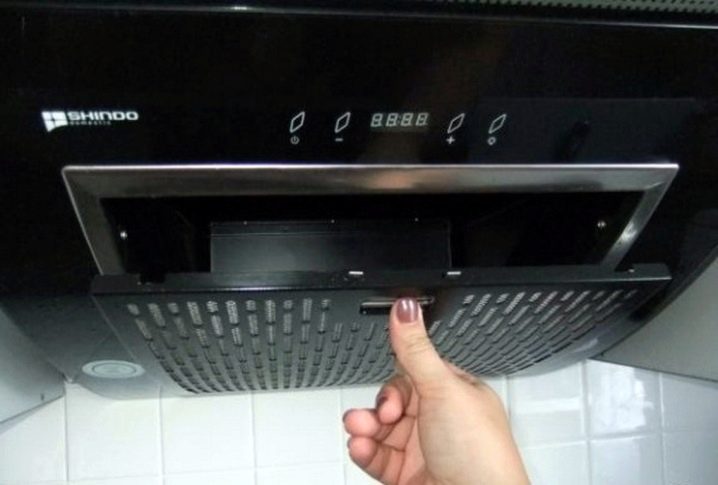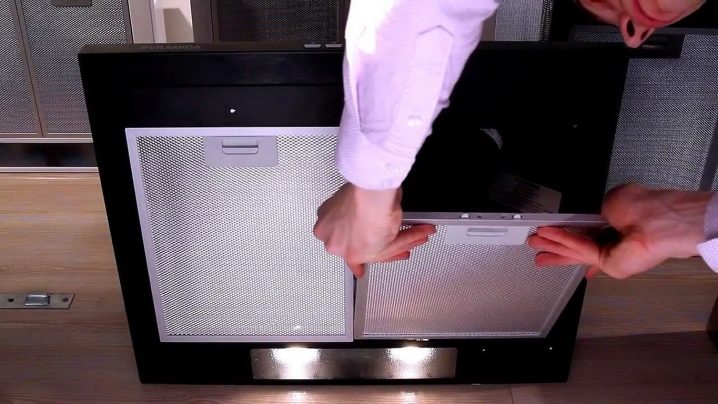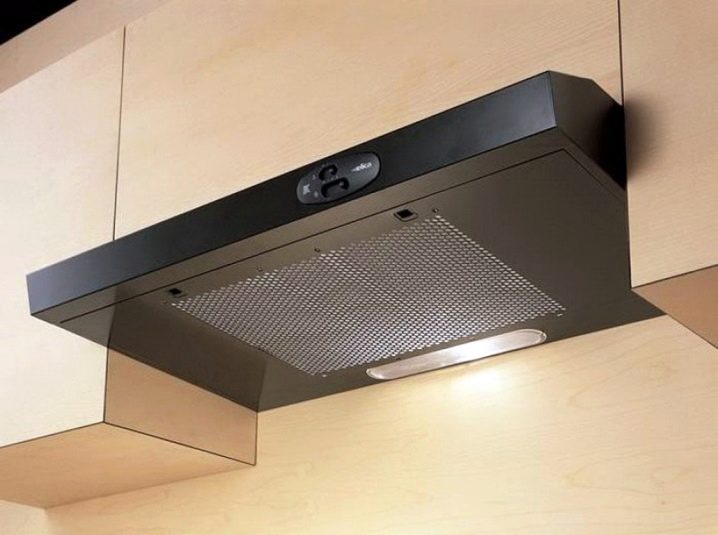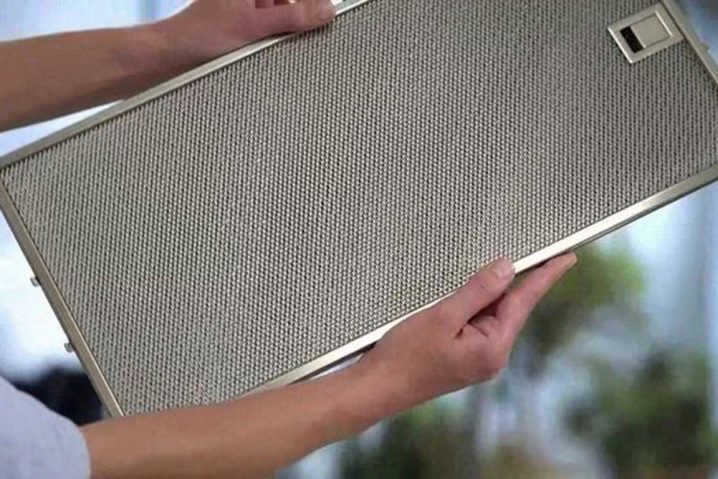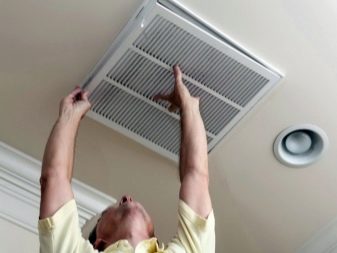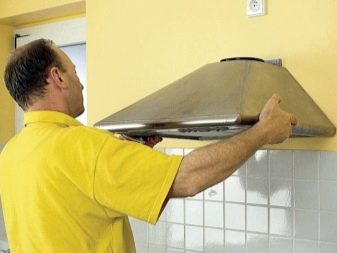Filter for kitchen hood
The device of all extracts is the same: the basis of any model is its body with an external control panel, inside which there is an air catching plane, a motor (or a fan) and a filter system.
Kinds
There are two types of hoods: straight-through and recycling; The first type of equipment has a metal fat filter that removes fat from the air and does not allow them to "sit down" on the internal components of complex technology. Such models do not have a carbon filter, since the rest of the air is removed from the room due to a special pipe - the air vent. To ensure proper air circulation in the kitchen when the direct-flow hood is turned on, slightly open the window or window so that fresh air enters the room and makes the exhaust work even better.
The second type of exhaust is recirculated with a whole system of filters; it requires an additional carbon filter through which air passes through the second stage of purification - from an unpleasant odor. Purified by the absorbent air, in the role of which activated carbon in granules or powder acts, goes back to the kitchen and ensures proper air exchange, does not require opening the window.
Carbonic
Carbon filters are found in models of air extraction without exhausting air, that is, without that large massive pipe that sometimes stretches along the ceiling of the whole kitchen. The exhaust air recirculation format works this way: the kitchen air is sucked inward thanks to a powerful motor, the air goes through two stages of cleaning: first it is cleaned of fatty particles through a metal cassette, then the particles that form unpleasant odors are removed, thanks to a set of carbon filters - they are based on excellent absorbent - activated carbon.
The charcoal filter for kitchen hoods is used only in recirculation models and requires timely replacement in order to avoid equipment breakage and ensure its quality work. The carbon filter stands behind the fat and immediately "catches" the air that has passed the first stage of purification; its basis is made up of an adsorbent - it is activated carbon, which is capable of absorbing extra odors.
A universal carbon filter in the kitchen hood reduces the operation of equipment: air is sucked up a little worse than in the traditional model, but a properly installed kitchen hood can work in the kitchen perfectly if the cooking zone is not too large. A conventional carbon filter looks like a plastic base (round or rectangular) with a hole for activated carbon. Replacing the filter requires regular: about 3-6 months, the used filter must be removed and a new one put on so that the hood does not lose its functionality.
Fatty
There is a fat filter in each hood, and its main task is to retain small particles of fat; without this component, in any exhaust technology, its interior would have found a difficult oil deposit during the month.
Fat filters are conventionally divided into two types: disposable and reusable filters.
- The first type - disposable filters are used until they are completely covered with a greasy film. Accessories are made of materials like sintepon, acrylic or non-woven, which are not “washable” and are thrown away after several months of use, that is, it is replaced.
Inexpensive design hoods with replaceable filters provide for the presence inside the flat "mats", which we call grease filters. By the way, the re-use of a dirty filter can cause damage to equipment, so do not skimp on the purchase of a new one - the hood will last longer and better.
- Reusable fat-absorbing filters hoods are made of metal and serve throughout the lifetime of the kitchen appliances themselves. Metal grease filters can be washed in the dishwasher or by hand with a sponge; their properties are not lost from washing, on the contrary, the drawing operation becomes more qualitative.
The basis of the reusable grease filter are materials like aluminum, stainless steel or steel mixed with zinc. The most practical filter will be a fragment of stainless steel - it is more durable and has high cleaning properties. The traditional shape of the filter is a rectangle with a mesh center and a dense metal border, which form a fat-absorbing cassette.
Among the budget flat hoods, the Turbo brand model with three speeds and a simple work system is especially popular. It is based on two filters - fat and coal, which adequately purify the air released during cooking and return it to the room without fat particles and an unpleasant odor.
How to clean
The metal filter in the hood can and should be washed about 2-3 times a month, removing fat from it. There are two ways to wash the filter: in the dishwasher or manually using detergent and a brush. By the way, any dishwashing detergent is suitable for cleaning a metal filter. There is a simple algorithm for how to wash the grease filter.
Remove the accessory from the hood, after removing the decorative panel of equipment. The filter is removed due to a small lock - you need to unfasten it with a simple movement of your finger, and remove the metal cassette.
Put the filter in the dishwasher vertically and send for cleaning. Prefer to wash the filter yourself? Keep it under the pressure of hot water and clean it with a brush and detergent, which effectively fights grease. Do not use soda - it degrades the quality of the metal filter.
Allow the filter to dry at room temperature; Then put it back in the hood and enjoy its work.
To replace the carbon filter in the recirculation hood, follow these steps:
- Disconnect the hood from the power supply.to ensure safe replacement of the carbon filter;
- Remove the metal grease filterto get to the coal;
- Then remove the carbon filter cartridge and remove it, replacing it with a new unused one;
- Put the cassette back and put the grease filter., install the top panel, connect the hood to the network and check its operation. If the hood makes sounds unusual for it, it makes a lot of noise or vibrates, you should reinstall the filter and check the quality of the system again.
Can the filter replace the hood
There is an opinion that in modern new buildings, an exhaust hood is an unnecessary and unnecessary element, since new ventilation systems allow too warm air to escape from the room (kitchen) - why do we need an exhaust hood? Others in the old-fashioned way get the classic hood with a bulky air vent, well, if the kitchen is spacious, and if it is small?
The fact is that when cooking, it is not only steam that is released, and products like fat (even though we don’t always notice them) and other small particles that are ill-fatedly deposited on the facades of the kitchen and even worse - on the walls or ceiling. That's what hoods are for to catch not only the unpleasant smell of burning or extinguishing, but also small, barely noticeable particles of food, fat and cooking products.
The filter above the stove instead of the hood - a device for kitchens, where they cook maximum once a month and exclusively diet products, since such a unit is not capable of sucking in the air of high quality and cleaning it adequately. By the way, there is no separate concept of filter and hood - these two elements form a single whole and form the exhaust system necessary even for ultra-modern houses and apartments.
The principle of operation of any exhaust (with or without air vent) is reduced to the fact that thanks to a powerful motor, air is drawn into the interior of the equipment and is cleaned of fat, and only then the differences in the types of exhaust technology are formed. The air vent on classical models removes the remaining air in the hood into the mine, in a word, removes the air from the room, and in the recirculation air it undergoes additional cleaning through a carbon filter that absorbs excess odor, while the air returns to the clean room. It is not necessary to choose - a full exhaust or a separate filter,even high-quality, reliable, made of good material, because the filter will not be able to clean the air as finely as the absorbent in the recirculation model does or the pipe - in the straight. The maximum of what a free-standing filter above the stove can give is the “reception” of the fat layer, which will gradually settle on its base, the mesh surface.
There are cases when in the kitchen you want to save valuable heat and at the same time - get rid of the unpleasant smell emanating from the stove. The so-called recirculation hoods will come to the rescue, which work well enough if you pick up a hood of power corresponding to square meters of your kitchen room. This hood is easily installed - there is no need to pull through massive pipes through half of the room and clutter it up this way. Recirculation hoods are so flat in their design that sometimes the technique can not be noticed; there are separate and embedded models - each of them is a worthy choice. The built-in hoods are mounted in a wall cabinet directly above the stove, their presence is indicated only by a thin cabinet control panel with touch-sensitive or traditional buttons.
If you are thinking about purchasing a hood with filters, the recirculation model is the only right decision for your kitchen.
